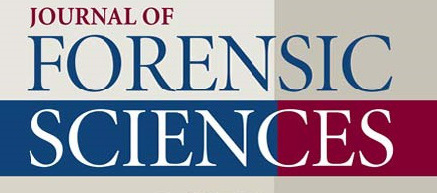Article: Characterization of Aluminum Powders in IEDs
The Journal of Forensic Sciences is now offering an early viewing of a new article co-authored by a Microtrace scientist. “Characterization and differentiation of aluminum powders used in improvised explosive devices – Part 1: Proof of concept of the utility of particle micromorphometry” is co-authored by Microtrace Senior Research Microscopist Jack Hietpas, Ph.D.
This article explores the potential usefulness of automated particle micromorphometry for comparisons of Aluminum powders recovered from IEDs. The authors use automated transmitted light microscopy to analyze and collect 17 size and shape parameters for a wide-range of samples. Using these parameters, they determine that variation between samples was large enough to differentiate them, despite variation within individual samples.
To access the paper online, please visit the Wiley Online Library, otherwise, please contact us and we will be happy to provide a copy of the article.
Abstract
“Characterization and differentiation of aluminum powders used in improvised explosive devices – Part 1: Proof of concept of the utility of particle micromorphometry”JenaMarie Baldaino MS, Danica M. Ommen PhD, Christopher P. Saunders PhD, Jack Hietpas PhD, JoAnn Buscaglia PhD, Journal of Forensic Sciences, 2020
https://doi.org/10.1111/1556-4029.14564
Aluminum (Al) powders are commonly used in improvised explosive devices as metallic fuels, a component of explosive mixtures. These powders can be obtained readily from industrial‐scale and consumer products, and produced using unsophisticated “kitchen chemistry” techniques. This research demonstrates the potential of automated particle micromorphometry for comparisons between known source and questioned Al powders recovered from IEDs, as well as for insight into the method of Al powder manufacture. Al powder samples were obtained from legitimate manufacturers, and 56 samples were produced “in‐house” from Al‐containing spray paints and ball‐milled Al foils. Transmitted light microscope images of Al powder particles were acquired using an automated stage with automated z‐focus; 17 size and shape parameters were measured for all particles. Approximately 37,000–2,500,000 particles/sample were analyzed using an open‐source statistical package with customized code. Dimensionality reduction was required for processing the large datasets: eight of the 17 measured variables were selected based on inspection of the correlation matrix. Data from four subsamples from each of the 56 samples produced using “in‐house” methods were analyzed using ANOVA to assess the within‐ and between‐sample variation. High within‐sample variation was noted; however, ANOVA and post‐hoc Tukey’s honestly significant difference (HSD) tests demonstrated that the between‐sample variation was substantially larger than the within‐sample variation. Each sample could be differentiated from all other samples in the test set. Future experiments will focus on ways to reduce the within‐sample variation, and additional statistical and microanalytical methods to classify sources and confidently constrain the method of Al powder manufacture.
How May We Help You?
Contact usto discuss your project in more detail.








